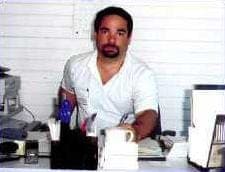
Curated with aloha by
Ted Mooney, P.E. RET

The authoritative public forum
for Metal Finishing 1989-2025

-----
Cleaning process for high-polish brass
1999
I work in a finishing process area for a manufacturing company in the Rocky Mountain region.
I'm looking for information concerning cleaning processes for red polishing jeweler's rouge ⇦ this on eBay or Amazon [affil links] on brass stamped parts. Our polished product is being finished out for nickel/chrome electroplate and acrylic powder coating.
Our current coating processes use Aqueous and Semi-aqueous ultrasonic cleaners with good results. Our biggest issue is with a limited number of stamped parts that trap above average amounts of rouge during auto-polishing. We have to manually remove or recycle these parts through the auto-cleaning process to break and remove dried rouge before coating. We are currently evaluating different Aqueous/Semi-aqueous and solvent ultrasonic cleaners with mixed results. We've tested several off-line non-destructive stripping process but would prefer an 'in-line ultrasonic cleaning process to minimize lead-time thru the shop.
Any thoughts on stripping or ultrasonic cleaning for heavy red rouge build-up?
Jon Mohr- Colorado Springs, Colorado
I believe you're on the right track with ultrasonics and would be switching to the wrong track with vapor degreasing--which is pretty well known to old time platers to strip out the volatile components of the polishing compound and leave behind the dried on abrasive particles.

Ted Mooney, P.E.
Striving to live Aloha
finishing.com - Pine Beach, New Jersey
1999
Like Ted said, solvent degreasing has been the standard for a long time but is becoming a dinosaur. I spent 3 years trying to come up with an alternative to Perchlorethylene in removing several types of bar and liquid compounds from Zinc diecast. An advantage you have with an aqueous system is the parts will not oxidize like the castings. We found that a high pressure, rotating system will both remove the organics and the residue more effectively than ultrasonics alone. There are several companies that market the high pressure wash systems.

Jim Conner
Anoplex Software
Mabank, Texas USA

1999
Unless you use non-anhydrous solvent in the ultrasonic bath, you will find that in years to come fissures and cracks will appear in the brass. Although very good at cleaning, anhydrous and ammonia ⇦ this on eBay or Amazon [affil links] based chemicals cause premature brittleness and fatigue in any cuprous alloy.
Steve Clarkplating & polishing shop - Belfast, Maine
2002
Q, A, or Comment on THIS thread -or- Start a NEW Thread